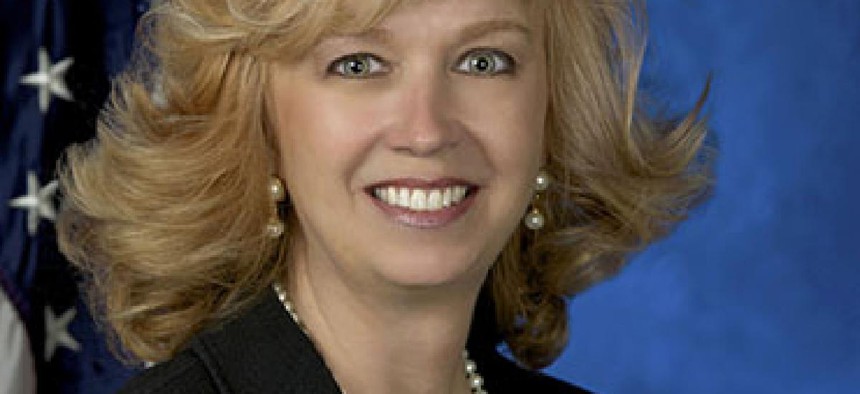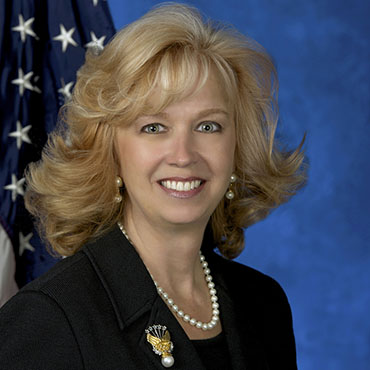VA's digital benefits system closes in on 1M claims

Department credits a fully deployed computer system with helping make a sizable dent in the department’s disability claims backlog.

Department of Veterans Affairs Undersecretary for Benefits Allison Hickey
The Department of Veterans Affairs says it is chipping away at its backlog of disability claims, thanks in part to the nationwide rollout of the Veterans Benefits Management System.
The tool gives VA's small army of 29,000 claims processors access to digitized and electronic medical records and other documents necessary to speedily complete their work.
"Sometimes the federal government is known for not always delivering on IT systems in particularly good ways, but I think this is a huge success story," said Allison Hickey, VA undersecretary for benefits, at a briefing and demo for reporters held in the Veterans Benefits Administration's downtown D.C. headquarters Oct. 30.
According to VA officials, the backlog of claims (defined as any claim that is older than 125 days) has dropped from 611,000 in March 2013 to 244,000 this month -- a drop of 60 percent. VBMS itself has been used to process 888,000 claims, and VA officials expect that number to hit 1 million sometime in mid-November.
"This system, on top of restructuring our complete training program, has been instrumental in getting us there," Hickey said.
Digitized, not digital
VBMS is a back-office system that collects and maintains data submitted by veterans through the eBenefits portal and through the Stakeholder Enterprise Portal, used by veterans' groups that assist members in making claims.
Moving from paper to electronic claims processing is a significant time saver for staff, according to the benefits analyst who led the tour of the system. Before VBMS, analysts did their work with a rubber thumb tip, to page through case files that numbered into the hundreds of pages, in search of diagnostic information or other data essential to deciding a case. The VBMS now allows users to perform keyword searches to hone in on needed information.
But it makes sense to think of VBMS as a digitized system, rather than a digital system. It is based on documents more than data, there is no common data dictionary to tag documents that is in wide use, and data isn't portable directly to other systems.
The VBMS communicates with the VA's electronic health record system VistA (for Veterans Health Information Systems and Technology Architecture) using an intermediate system called the Compensation and Pension Records Interchange. Data from VistA is ingested electronically, not through document scans. Additionally, VA physicians can access VBMS to add or review documentation.
A Capitol Hill staffer who tracks VA issues cautioned against giving too much credit to VBMS for reducing the backlog, noting that mandatory overtime, new production standards and other factors have contributed as well. The staffer also noted that an inspector general probe turned up evidence of data manipulation in disability claim backlog in the Philadelphia Regional Benefits Office. "All the department's statistics in this regard should be taken with an enormous grain of salt," the staffer said.
So far, more than 1 billion documents have been scanned into the system -- enough to fill 81 C-5 cargo planes, according to VA estimates. The original documents are being stored onsite with vendors where scanning is performed. The VA and the National Archive and Records Administration have teamed up to establish policy to secure the trove of old paper case files, which are in the custody of contractors who do the scanning.
'We should be trusted'
Officials credit the agile development model with helping to bring VBMS online.
It was launched on a limited basis at the end of fiscal 2012 at five regional offices. As of June 2013 the system was rolled out to all 56 VA regional offices, and today it is universally used across VA at 148 VHA facilities and by Veterans Service Organizations.
Still, fewer than half of veterans initiate claims using online systems -- a percentage that VA is hoping will grow as the eBenefits and other end-user access points become more widely known and trusted.
The Board of Veteran's Appeals accesses VBMS, but the appeals process itself is not handled online.
Hickey said the VA is "working to bring technology into the appeals process like we did in the claims process." Expanding IT services costs money, and Hickey bemoaned the relatively lowly status of VA's IT budget -- near the bottom of all federal agencies on a per capita basis.
"When we build things, we build them right," Hickey said. "And we should be trusted with a bigger and better IT budget to do more of this for our nation's veterans, and be able to deliver even better on our timeliness on our quality across the board at all of VA"



